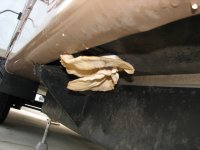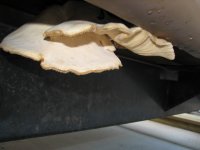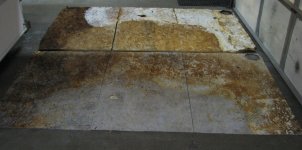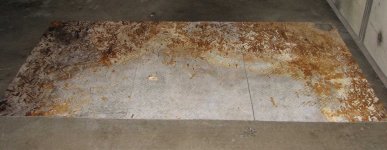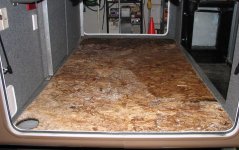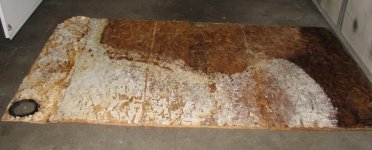Last year I noticed a mushroom-like fungus growing under the right outboard storage floor. It was located at the floor port that serves as a utility opening for the connections inside the storage compartment. I scraped off the fungus and soaked the area with bleach and a fungicide and it seemed to take care of the problem.
This fall I noticed that the floor area where the fungus was located is soft and I could probably push my hand through it if I tried hard enough. Since I was out of time to work with it I decided to wait until coming home from Forida this spring to lift up the vinyl cover and check the condition of the flooring underneath.
Now that I am in Florida, the fungus is growing again and has again formed a mushroom-like growth under the coach. I have attached photos of it.
Does anyone have any suggestions on how to get rid of the problem? Is it possible for this fungus to spread and rot a greater portion of the storage area floor?
Thanks.
This fall I noticed that the floor area where the fungus was located is soft and I could probably push my hand through it if I tried hard enough. Since I was out of time to work with it I decided to wait until coming home from Forida this spring to lift up the vinyl cover and check the condition of the flooring underneath.
Now that I am in Florida, the fungus is growing again and has again formed a mushroom-like growth under the coach. I have attached photos of it.
Does anyone have any suggestions on how to get rid of the problem? Is it possible for this fungus to spread and rot a greater portion of the storage area floor?
Thanks.

